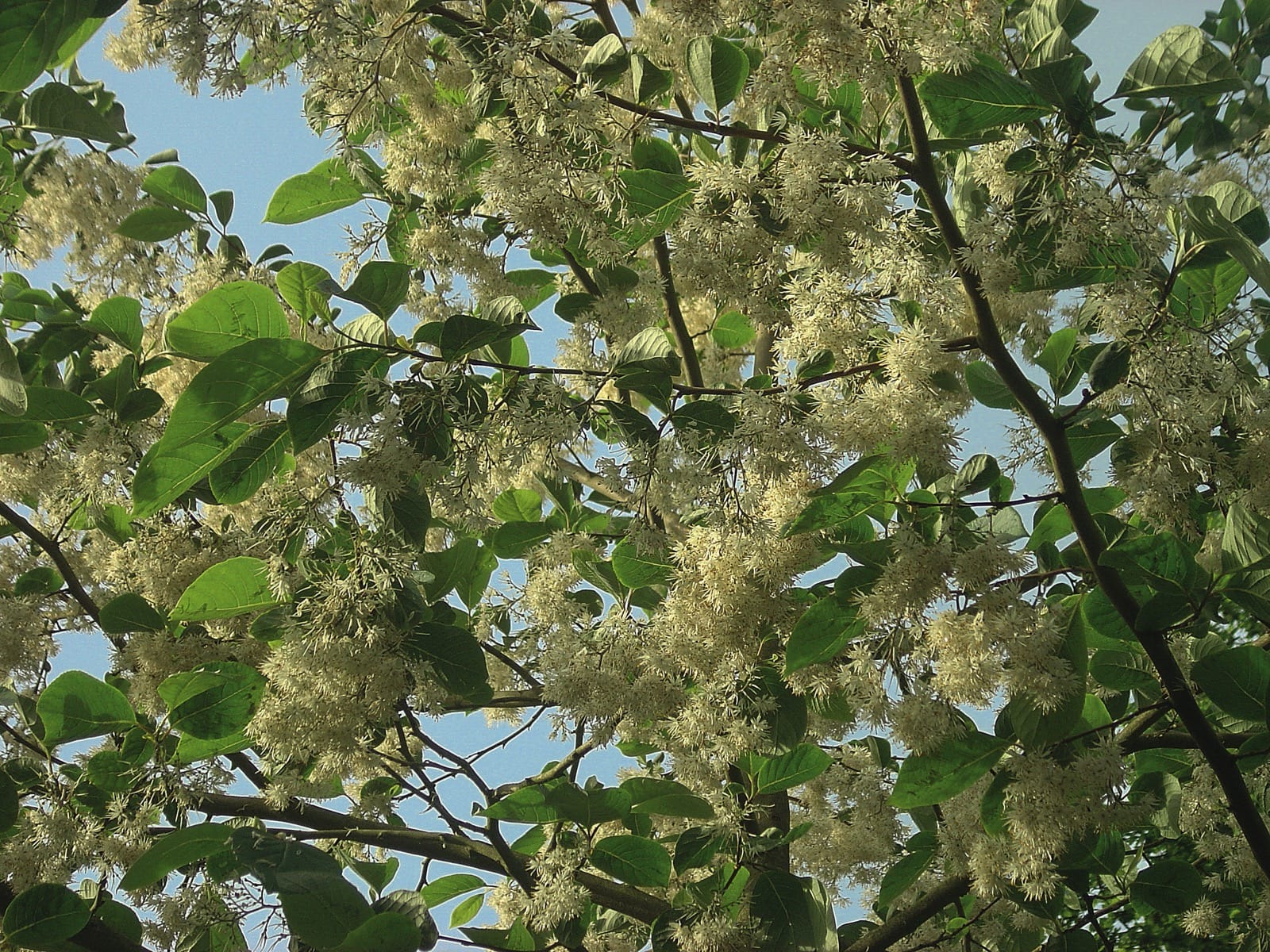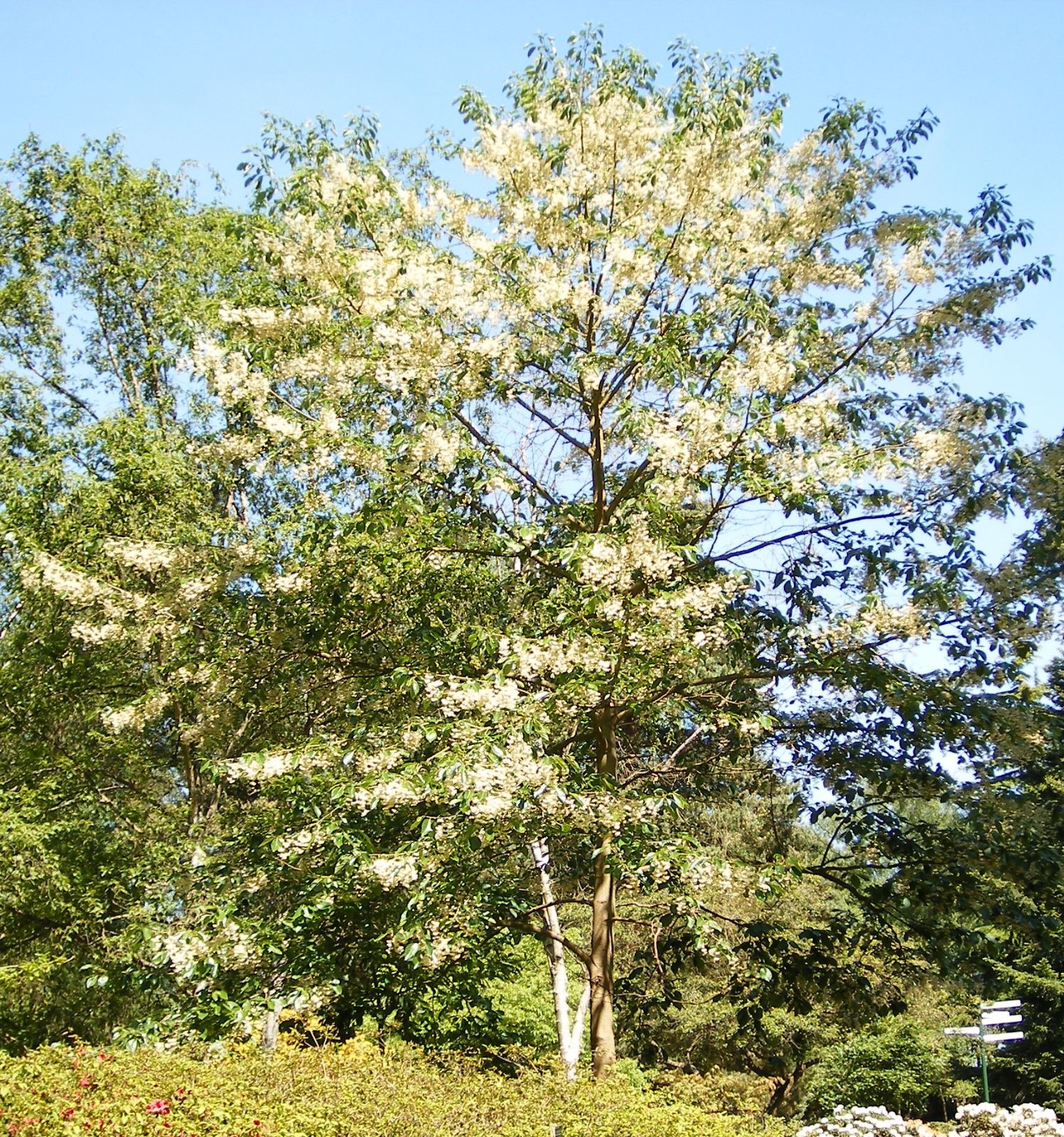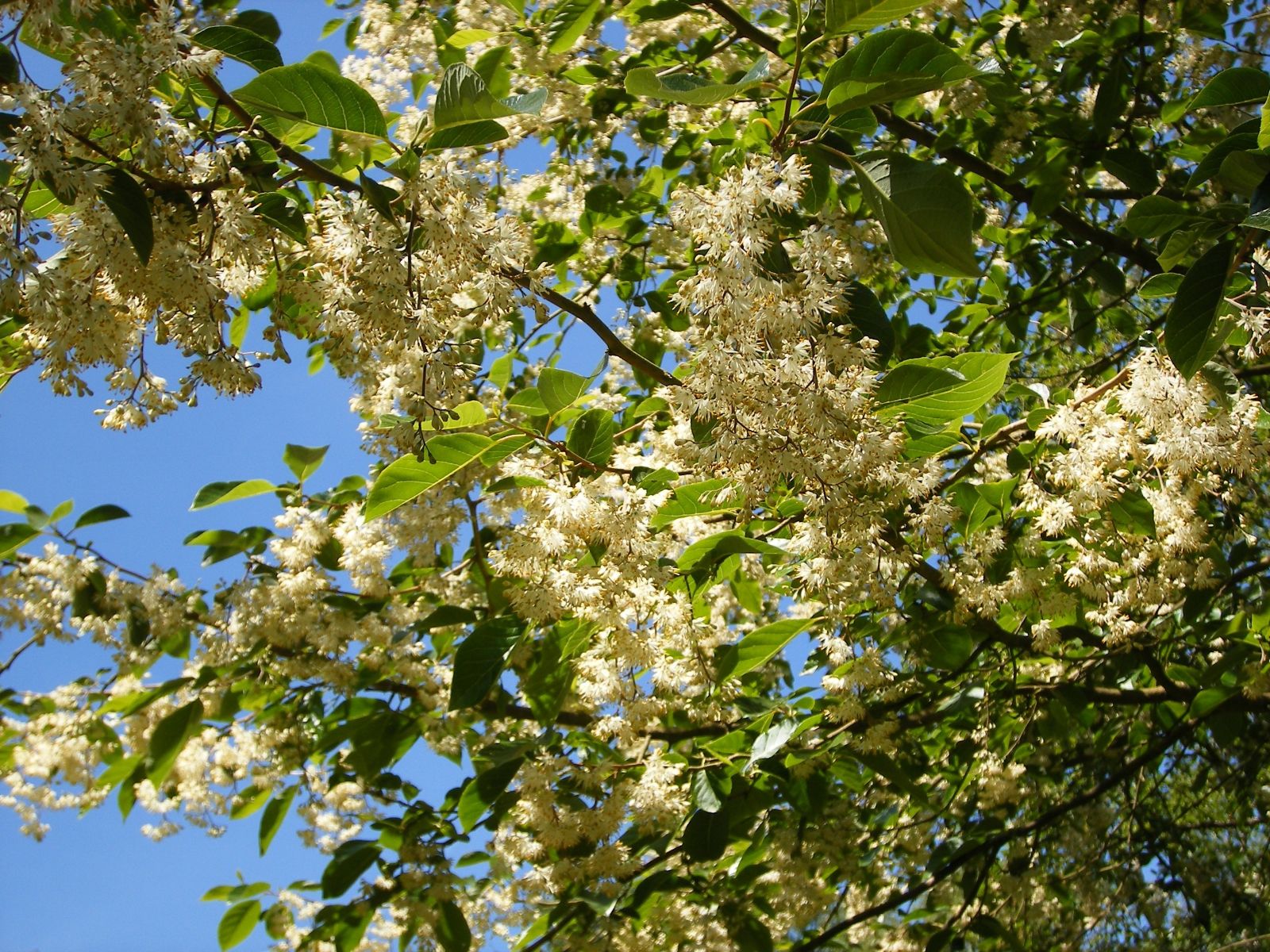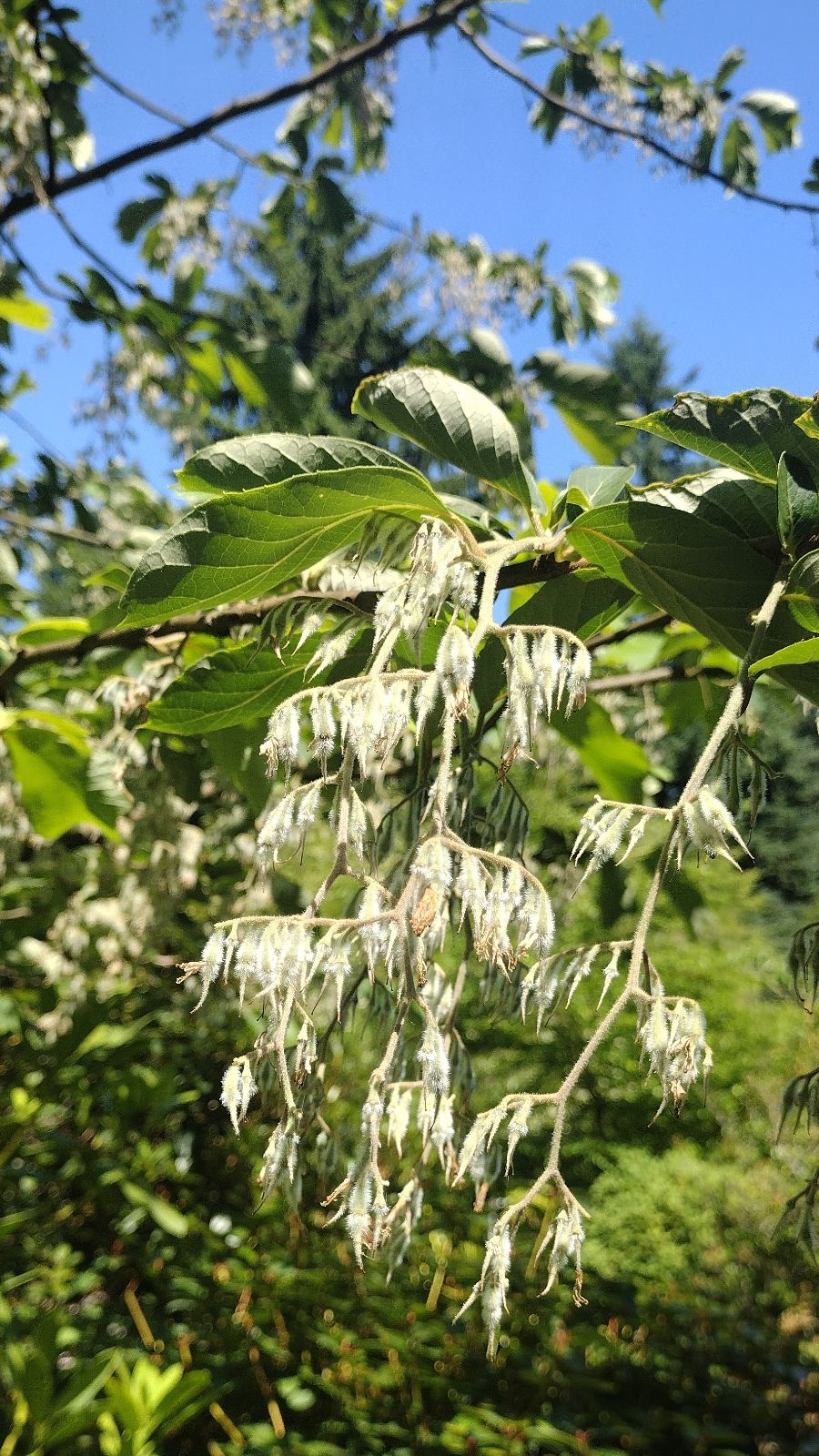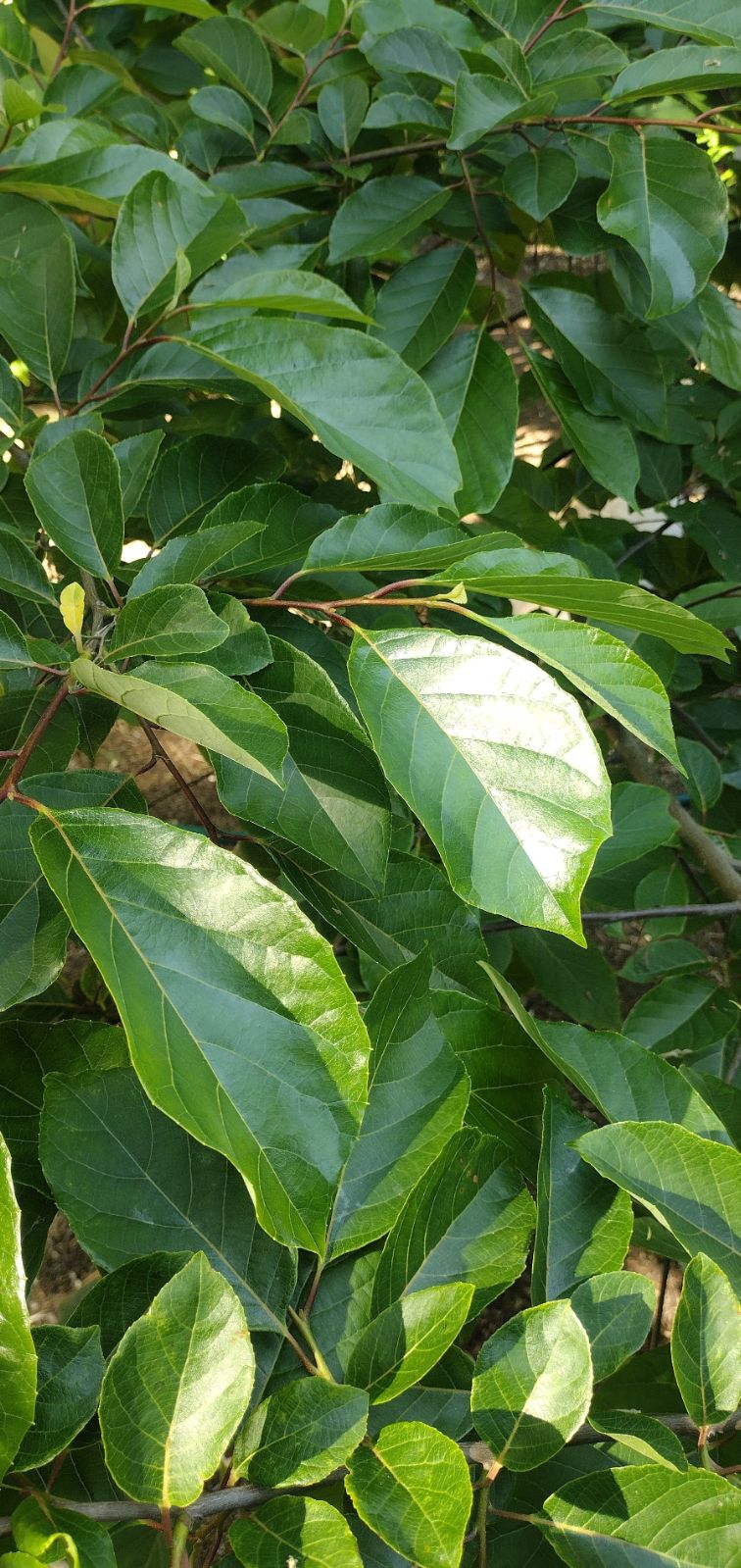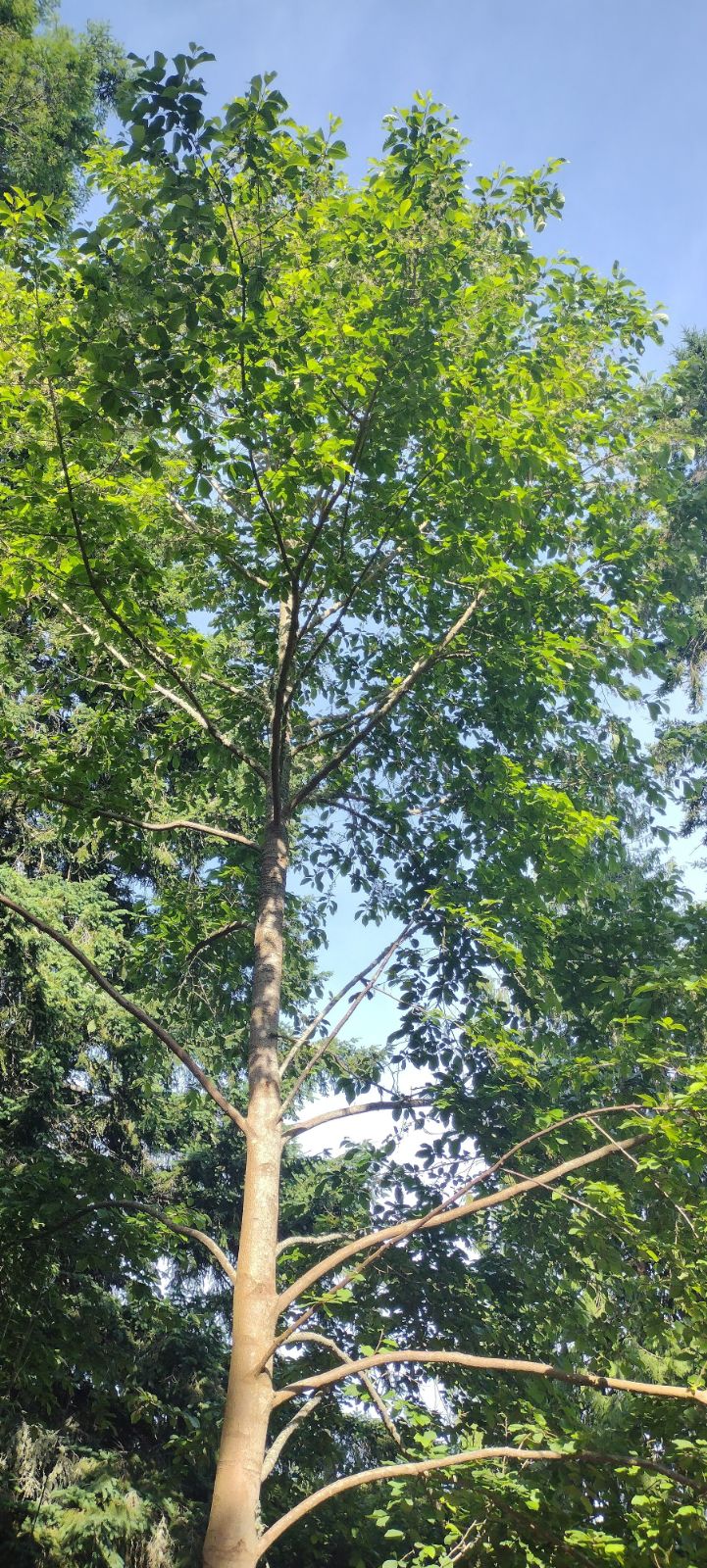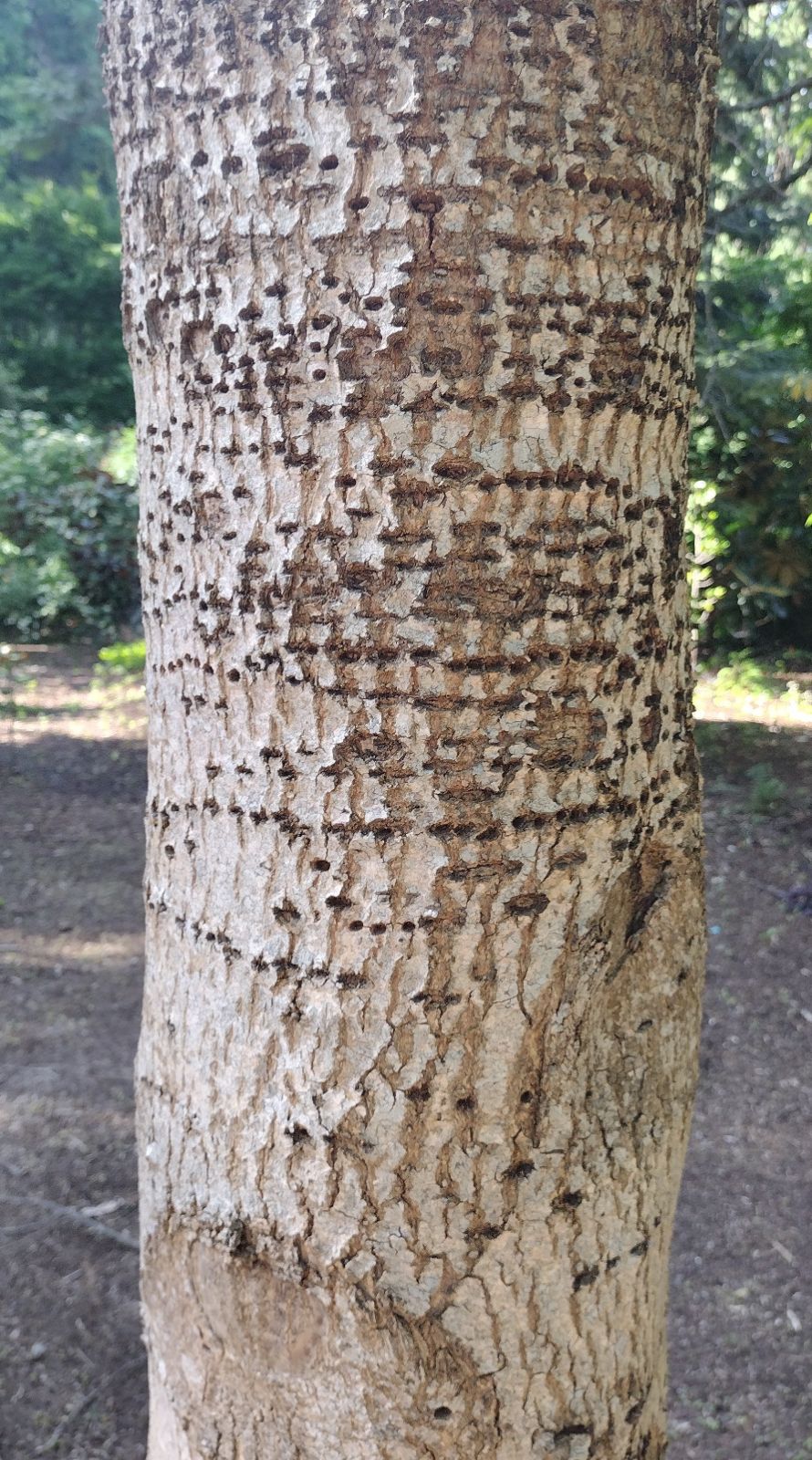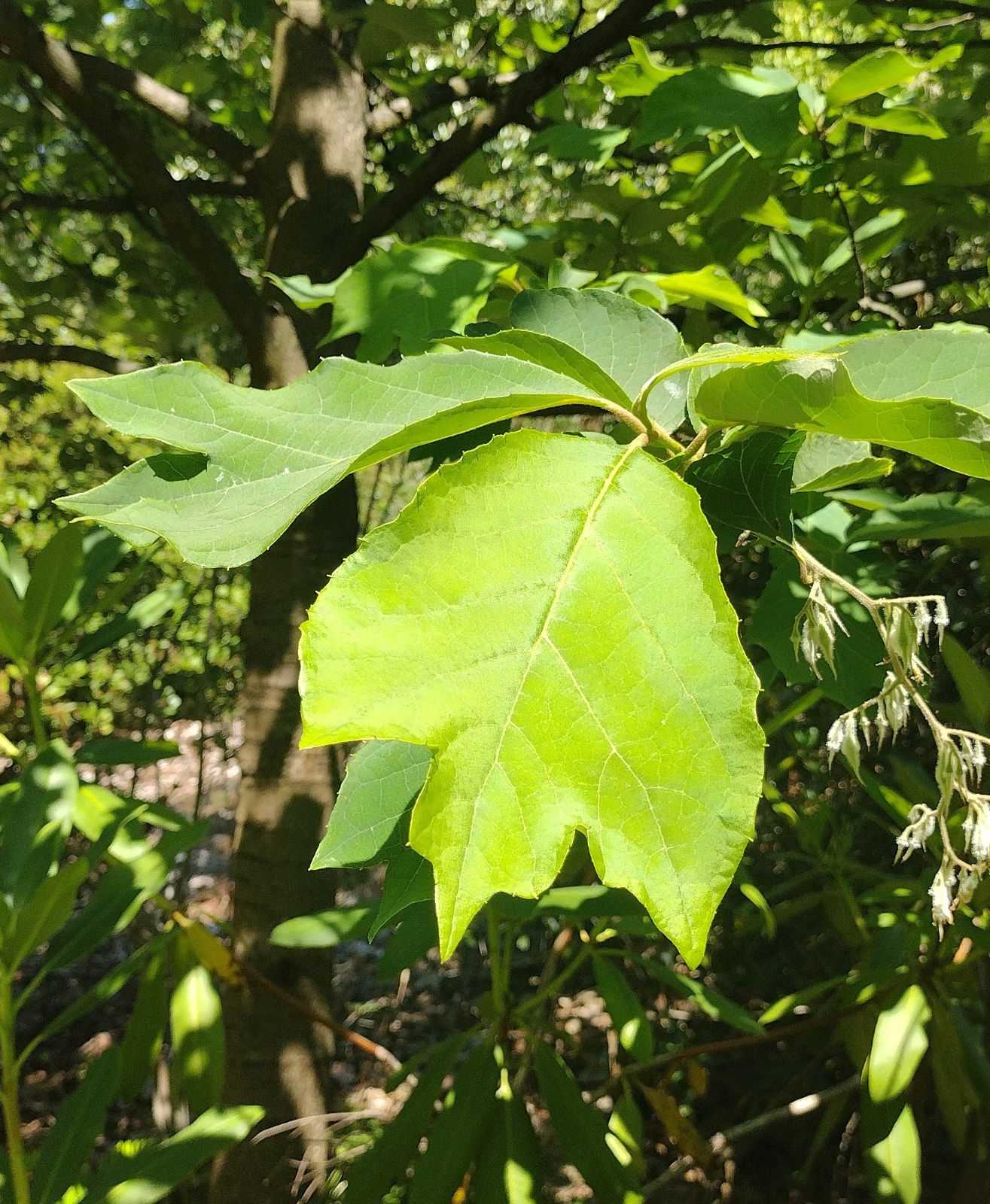Pterostyrax psilophyllus
Sponsor
Kindly sponsored by
Arabella Lennox-Boyd
Credits
John Grimshaw & Ross Bayton (2009)
Recommended citation
Grimshaw, J. & Bayton, R. (2009), 'Pterostyrax psilophyllus' from the website Trees and Shrubs Online (treesandshrubsonline.
Genus
Tree to 15 m or more, 0.45 m dbh. Branchlets stellate-tomentose. Leaves 5–15 × 5–9 cm, oblong to elliptic or obovate, upper surface largely glabrous, lower surface densely covered with grey stellate tomentum, 6–11 secondary veins on each side of the midrib, margins minutely to coarsely serrate, sometimes three-lobed, apex acute to acuminate; petiole 1–2 cm long, densely tomentose. Inflorescences paniculate, terminal or axillary, 10–15 cm long; pedicels ~0.2 cm long. Flowers 1.2–1.4 cm long; calyx ribbed, densely pubescent, corolla lobes oblong, filaments sparsely pubescent. Drupe subfusiform, ~2.5 cm long, (5– to) 10-ribbed, densely bristly. Flowering April to May, fruiting August to October (China). (Hwang & Grimes 1996).
Distribution China western Guangxi, Guizhou, southwest Hubei, eastern Sichuan, northeast Yunnan.
Habitat Moist, shaded areas under forest, between 600 and 2500 m asl.
USDA Hardiness Zone 5-6
RHS Hardiness Rating H4
Conservation status Vulnerable (VU)
Taxonomic note This species is often confused with the Japanese P. hispidus, but the hairs on the leaf veins of P. hispidus are primarily simple, not stellate (Hwang & Grimes 1996). It is probable that references to Chinese P. hispidus are to this species. A variant with three-lobed leaves from Guizhou was named P. leveillei Chun, but is no more than a local expression of P. psilophyllus (T. Hudson, P. Wharton, pers. comms. 2008).
Pterostyrax psilophyllus is the rarest of the three Pterostyrax in cultivation, but is grown in collections throughout our area and is commercially available in North America, where Jacobson (1996) records an introduction in 1983 and a release to the market by Piroche Plants in about 1993. Its inflorescences are intermediate in length between those of P. corymbosus and P. hispidus, and appear consistently earlier than those of the latter (Clarke 1988). A 6 m, single-stemmed specimen seen at the Morris Arboretum in late May 2006 had finished flowering, while a tree of P. hispidus nearby was in full flower. At Quarryhill, a tree grown from SICH 0845, planted in 1993, was 8 m tall in 2004. This had also formed a single stem, and had greyish brown bark. Another collection was made on the Sichuan Expedition of 1999, under the number SICH 2012, from trees reaching 15 m in regenerating broadleaved woodland, and a specimen from this material grows at Kew. The species has also been collected in Hubei (by the 1994 NACPEC expedition, for example, under 96750), giving rise to specimens in several American collections. The earliest introductions, as recorded by Clarke (1988), however, came by the more prosaic route of the Index Seminum of Beijing Botanical Garden, seed from this source being received at Kew in 1963. The specimen at Wakehurst Place mentioned by Clarke (1988) is still alive, and had reached 7 m when measured in 1996 (Kew database). At Westonbirt there is a tree of c.10 m, derived from Shanghai Botanic Garden seed (S. Andrews, pers. comm. 2008).
In one of his last contributions to New Trees before his untimely death, Peter Wharton wrote from Vancouver (pers. comm. 2008): ‘We grow a number of collections of this species, notably two I made in 1994 in the Dashahe Cathaya Reserve, northern Guizhou under PW 6 and PW 59. In the wild this species has the capacity to become a large forest tree and is often a target for selective felling. Trees growing in the David C. Lam Asian Garden have been heavily damaged by voles gnawing at the lower trunks, severely reducing height growth. Two trees are now just over 4 m and appear to be growing away rapidly. We have also three trees derived from seed collected on Emei Shan by Shanghai Botanic Garden in 1992. These have proved to have immense vegetative vigour, growing to over 17 m, before being badly damaged by heavy snow in November 2006, when still in leaf. Although hardy here, Pterostyrax psilophyllus is weak-wooded, and the small terminal flowers are often hidden by heavy foliage.’

